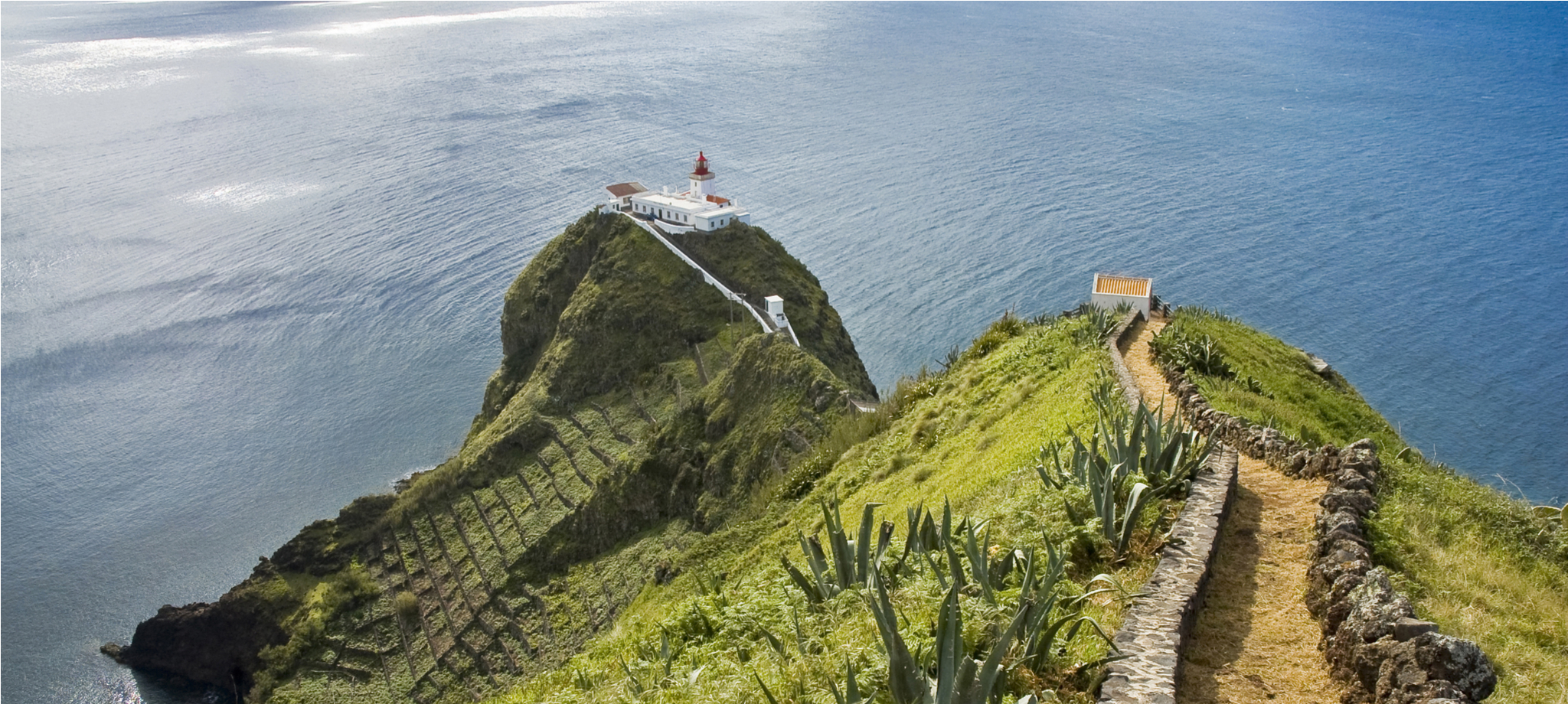Azores Islands: Location, History, Climate and more.
The Location of Azores Islands
The Azores Islands are a Portuguese archipelago in the North Atlantic Ocean, located about 1,500 km (930 mi) from Lisbon and about 3,900 km (2,400 mi) from the east coast of North America. The Monchique islet on Flores Island, located at 31° 16′ 24″ W is regarded as the westernmost point in Europe, even though from a geological standpoint the two westernmost Azorean islands (Flores and Corvo) actually lie on the North American plate. Nowadays the Azores’ main industries are tourism, raising cattle for milk and meat, and fishing.
The nine major Azorean islands and the eight small Formigas extend for more than 600 km (373 mi) and lie in a northwest-southeast direction. The vast extent of the islands defines an immense exclusive economic zone of 1,100,000 Km2 (420,000 square miles). The westernmost point of this area is 3,380 km (2,100 mi) from the North American continent. All of the islands have volcanic origins, although Santa Maria also has some reef contribution. Mount Pico on Pico Island, at 2,351 m (7,713 ft) in altitude, is the highest in all of Portugal. The Azores are actually the tops of some of the tallest mountains on the planet, as measured from their base at the bottom of the ocean. The archipelago forms the Autonomous Region of Azores, one of the two autonomous regions of Portugal, along with the archipelago of Madeira.
Azores History
The Azores Islands, located in the middle of the Atlantic Ocean, have a rich and fascinating history that dates back to their volcanic origins millions of years ago. The islands were first discovered and settled by the Portuguese in the 15th century during the Age of Exploration. In 1427, the Portuguese navigator Diogo de Silves is believed to have been the first European to set foot on the islands.
Throughout the centuries, the Azores played a strategic role as a stopover point for ships traveling between Europe and the New World. The islands’ location made them a crucial hub for trade, exploration, and naval operations, attracting attention from various European powers.
During the 16th and 17th centuries, the Azores became a target for attacks and invasions by pirates and privateers seeking to disrupt trade routes and plunder riches. The islands’ fortifications and defensive structures bear witness to this turbulent period in their history.
In the 20th century, the Azores gained geopolitical significance during World War II, serving as a key military base for Allied forces in the Atlantic. The islands also played a role in the Cold War, with the United States establishing a military presence on Terceira Island to monitor Soviet activities in the region.
Today, the Azores Islands are known for their stunning natural beauty, unique ecosystems, and vibrant culture. The islands have evolved into a popular destination for eco-tourism, outdoor activities, and sustainable travel, attracting visitors from around the world.
The Azores’ history is reflected in their charming towns, historic architecture, and cultural traditions, creating a blend of influences from Portugal, Europe, and the Atlantic. With a rich heritage and a promising future, the Azores Islands continue to captivate travelers with their enchanting landscapes and timeless allure.
Azores Climate
The Azores archipelago is located in a region between 37° N and the parallels of latitude that pass through the Lisbon area (39° 43′ / 39° 55′ N), giving it generally a tepid, oceanic, subtropical climate, with mild annual temperatures oscillating from 15°C (59°F) to 27°C (80°F). The average temperature in Azores is 18°C (64°F). Statistically the driest month is July and the wettest November. Average annual mean relative humidity is 76%. It ranges from 73% in August to 80% in December and January. Frost is non-existent in Azores.
The ocean water temperature in Azores range from 17°C (63°F) in the winter to 25°C (77° F) in the summer.
The average annual rainfall increases from east to west, with annual precipitation of 958 mm (37.7 in) or 80 mm (3.1 in) per month. The Azores high, an area of high atmospheric pressure, is named after the islands.
Light clothes, with one or two sweater or jacket pieces for the cooler days or nights, are enough all year round. In the winter slightly warmer clothing may be necessary. It is better to bring along a light raincoat, however, as there are sometimes showers followed at once by sunshine. “The days of the four seasons” as the Azoreans affectionately say are more prevalent in the months from October to April.
Azores Language
The official language in Azores is Portuguese. In most of the nine islands, the variety of Portuguese spoken is very similar to standard European Portuguese. The primary exception is the Portuguese spoken on the largest island, Sao Miguel, where the language has a distinct accent unlike any spoken in the Portuguese territory. English is widely used in the tourism industry and is gaining momentum in the islands due to being officially a required language in early schooling.
Top 20 Suggestions of Things To Do When Visiting the Azores Islands
Embark on a journey to the Azores Islands, a hidden gem in the middle of the Atlantic Ocean, where breathtaking landscapes, vibrant culture, and unique experiences await. From exploring volcanic craters and lush greenery to diving into crystal-clear waters and indulging in delicious local cuisine, the Azores offer a diverse range of activities for every traveler. Whether you seek adventure, relaxation, or cultural immersion, the Azores Islands promise an unforgettable getaway filled with natural beauty, outdoor adventures, and authentic Azorean charm. Discover the top things to do in this enchanting archipelago and get ready to experience the magic of the Azores like never before. Here are some suggestions:

